How much of a threat are unexploded bombs?
- Published
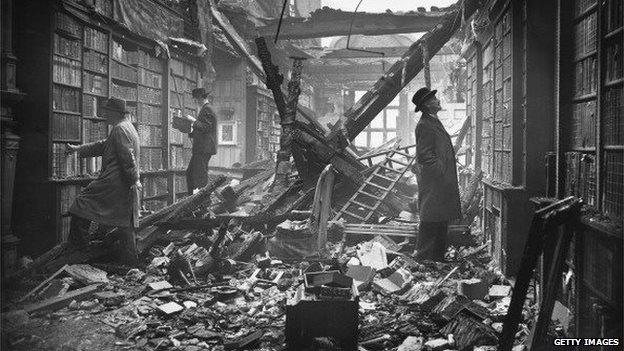
Bombs dropped by the Luftwaffe during World War Two caused extensive damage. Unexploded devices are still being found today
During World War Two, hundreds of thousands of bombs were dropped on Britain, so it is perhaps not surprising they are still being found more than 70 years later. But how much do we know about them?
They may be more than 70 years old but the unexploded bombs still being found are not mere relics.
The discovery of an unexploded device such as that found in east London on Monday triggers a military response. Neighbouring buildings and streets are evacuated, cordons are put in place and the army's bomb disposal experts go to work.
The bomb is then either defused or detonated in a controlled explosion.
The vast majority of unearthed devices are bombs dropped on Britain during World War Two, although old shells have been found close to former munitions factories and artillery ranges.
But how many of these devices are out there?
It is impossible to know, says Matt Brosnan, a historian at the Imperial War Museum.
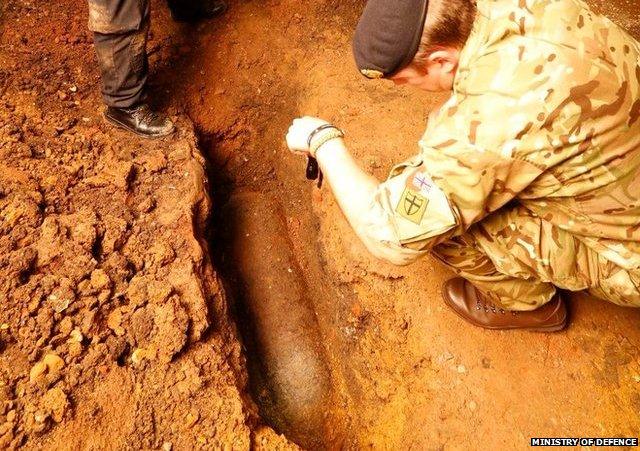
The most recent discovery of a bomb was made in Bethnal Green on Monday
"Just to put it in context, the Luftwaffe dropped 24,000 tonnes of high explosive on London in 85 major raids during the war," said Mr Brosnan, who worked on the Horrible Histories Blitzed Brits exhibition currently at the Imperial War Museum North in Manchester.
"Clearly not all of those would have exploded, because of defects or other reasons, and they could have buried themselves tens of feet below the surface so we simply don't know where they are."

Blitzed Britain
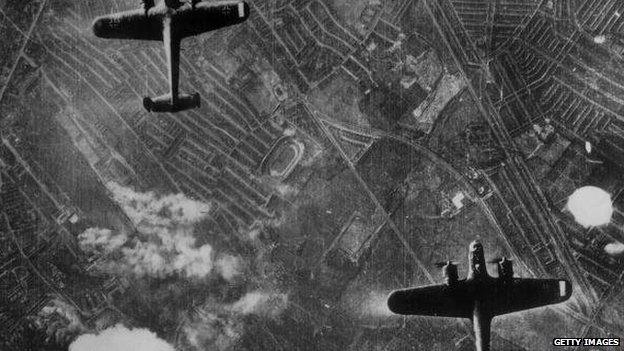
German bombers targeted areas of heavy industry
On 7 September 1940 the Blitz began with London bombed 57 nights in a row.
Over the next eight months the capital was attacked more than 70 times with Birmingham, Liverpool, Plymouth and Bristol also targeted as Hitler tried to destroy Britain's industry and morale.
Glasgow, Southampton, Portsmouth, Hull, Sheffield, Coventry and Manchester were also among the major cities attacked by the Luftwaffe.
Some 30,000 tonnes of bombs were dropped overall and more than 40,000 people killed.
After 1941 and the end of the Blitz the Luftwaffe still made air raids on the UK, especially over the south east.
The last raid was in May 1944.

Most WW2 bombs stumbled across in the 21st Century are discovered by builders digging foundations.
A guide on dealing with unexploded devices was released by the Construction Industry Research and Information Association (CIRIA) in 2009.
An estimated 15,000 items, ranging from unexploded bombs to small mortar rounds and grenades, were removed from UK construction sites between 2006 and 2008, the association said.
The CIRIA guide said as well as posing a risk, the discovery of unexploded devices can have "significant implications" for builders, causing delays and an increase in costs.
"In many cases these problems could have been avoided if an appropriate risk management procedure had been carried out at the initial stages of the project," the CIRIA guide said.
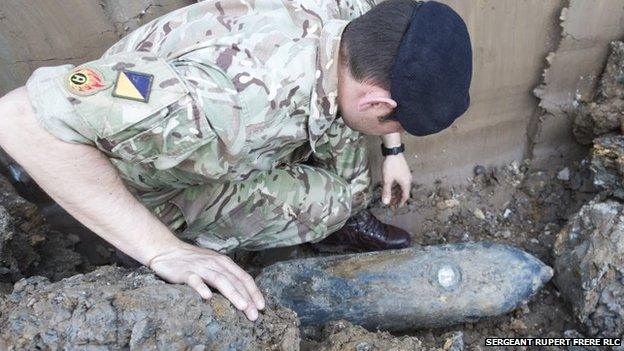
A bomb was found near Wembley stadium in May this year
The bombs are unlikely to explode, Mr Brosnan said, but their threat should not be underestimated.
"The risk is in their unpredictability, they are inherently unstable and still contain explosives, which is why they are treated so seriously and have to be disposed of properly and safely."
The largest bombs dropped on Britain were almost 4,000lb (1,800kg) devices nicknamed Satans.
And the damage bombs of any sizes could do was vast.
"I think the cordons put in place today give you an idea of how wide the damage could be," said Mr Brosnan.
"They would destroy buildings, make them totally uninhabitable, not to mention the lives that would be lost."
One bomb that landed near Bank Tube Station created a crater so large a temporary bridge had to be erected to cross it.
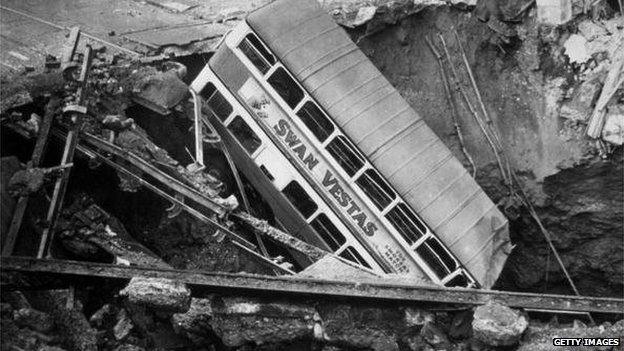
The bombs could create huge craters - such as this one in Balham in 1940 - as well as destroying buildings
In March this year a 550lb (250kg) device was found at a building site in Bermondsey, close to Tower Bridge.
At the time the army said it posed a significant risk and estimated the explosion could damage buildings up to 650ft (200m) away. About 1,200 households could have been affected.
And, in May, 300 homes and business were evacuated and a 1,300ft (400m) cordon put in place after a 110lb (50kg) bomb was found close to Wembley.
Both devices were removed and taken to safe places for a controlled explosion.
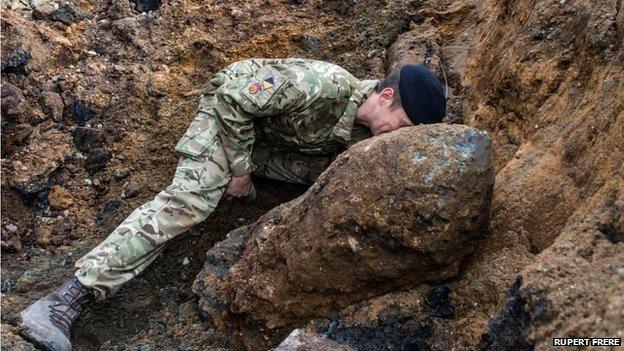
A bomb measuring about 5ft (1.5m) in length was found in Bermondsey in March
Monday's unearthing of a 500lb (227kg) bomb at a construction site in Bethnal Green led to a 100m cordon and 130 people being moved.
Devices are also found in Europe, and one discovery in January last year proved decades-old bombs can still explode. An excavator driver was killed when he hit a buried bomb in Euskirchen, near Bonn in western Germany.
And Mr Brosnan said unexploded explosives from World War One are still being found in northern France - predominantly by farmers.
"They may be 100 years old but these devices still need to be treated cautiously and disposed of properly."
It may be decades since the bombs were dropped but they serve as a good reminder of the importance of protecting peace, according to Mr Brosnan.
"There is always a great deal of interest when such a device is found", he said.
"They bring to life the nature of past conflicts, remind us of the huge level of destruction during two world wars, cast a shadow over our modern life.
"We should not forget."
- Published11 August 2015
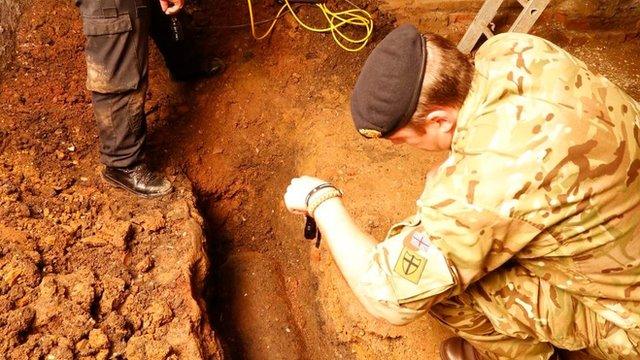
- Published22 May 2015
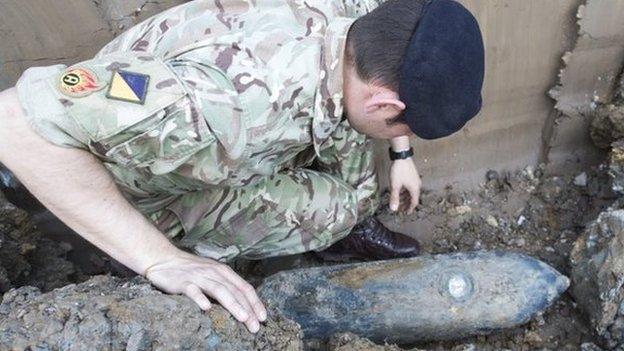
- Published8 July 2015
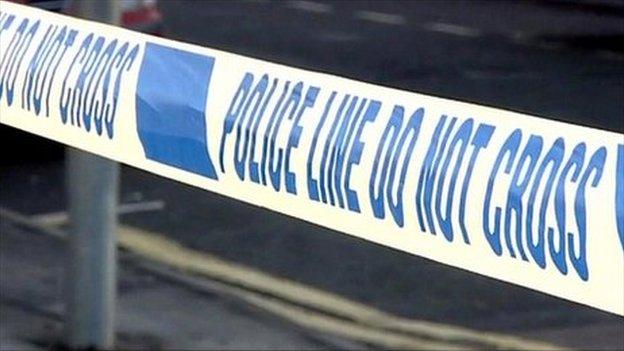
- Published24 March 2015
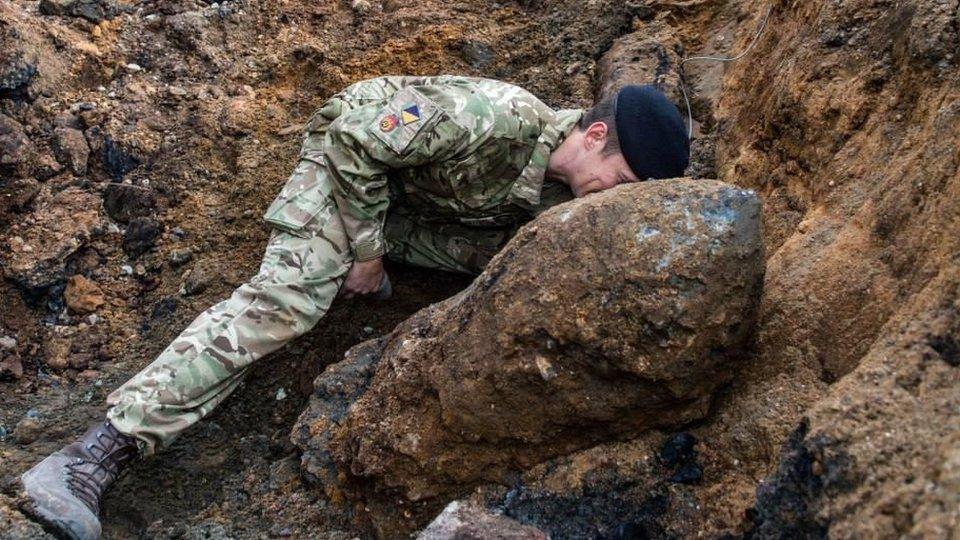
- Published22 July 2014
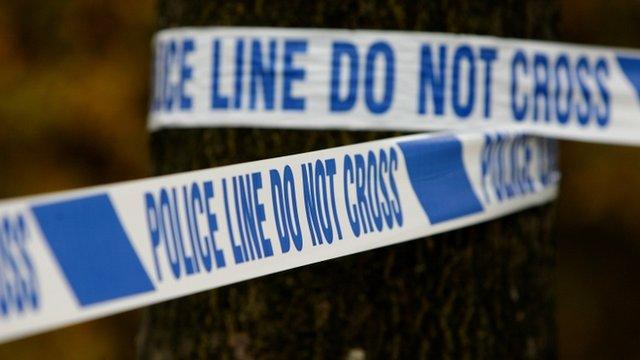
- Published28 February 2014
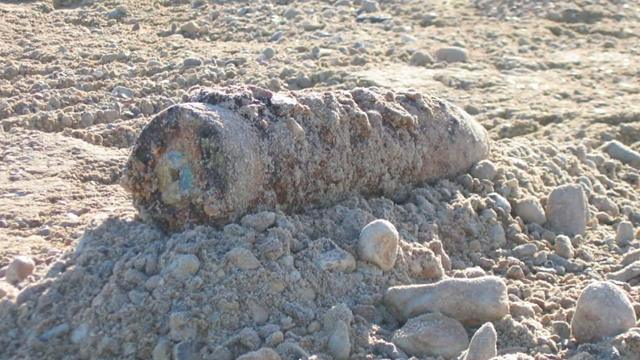
- Published11 August 2012
